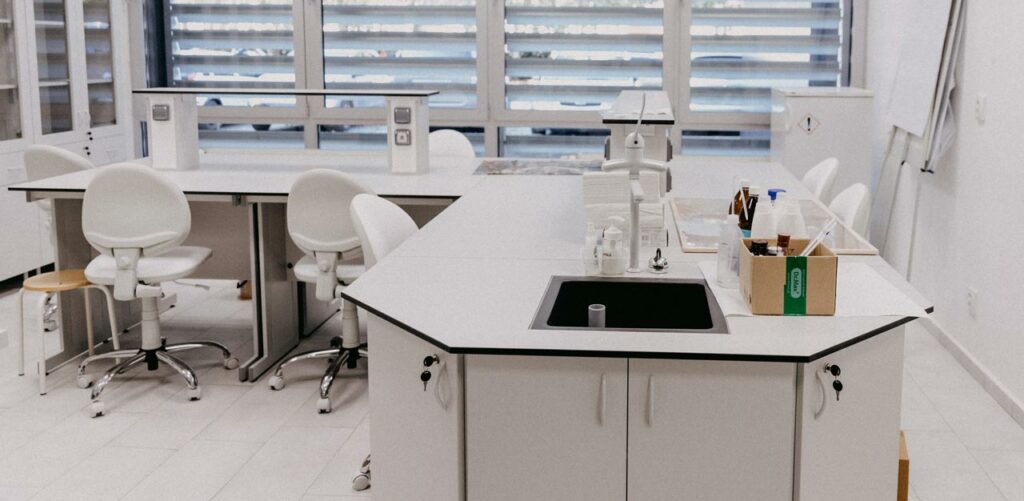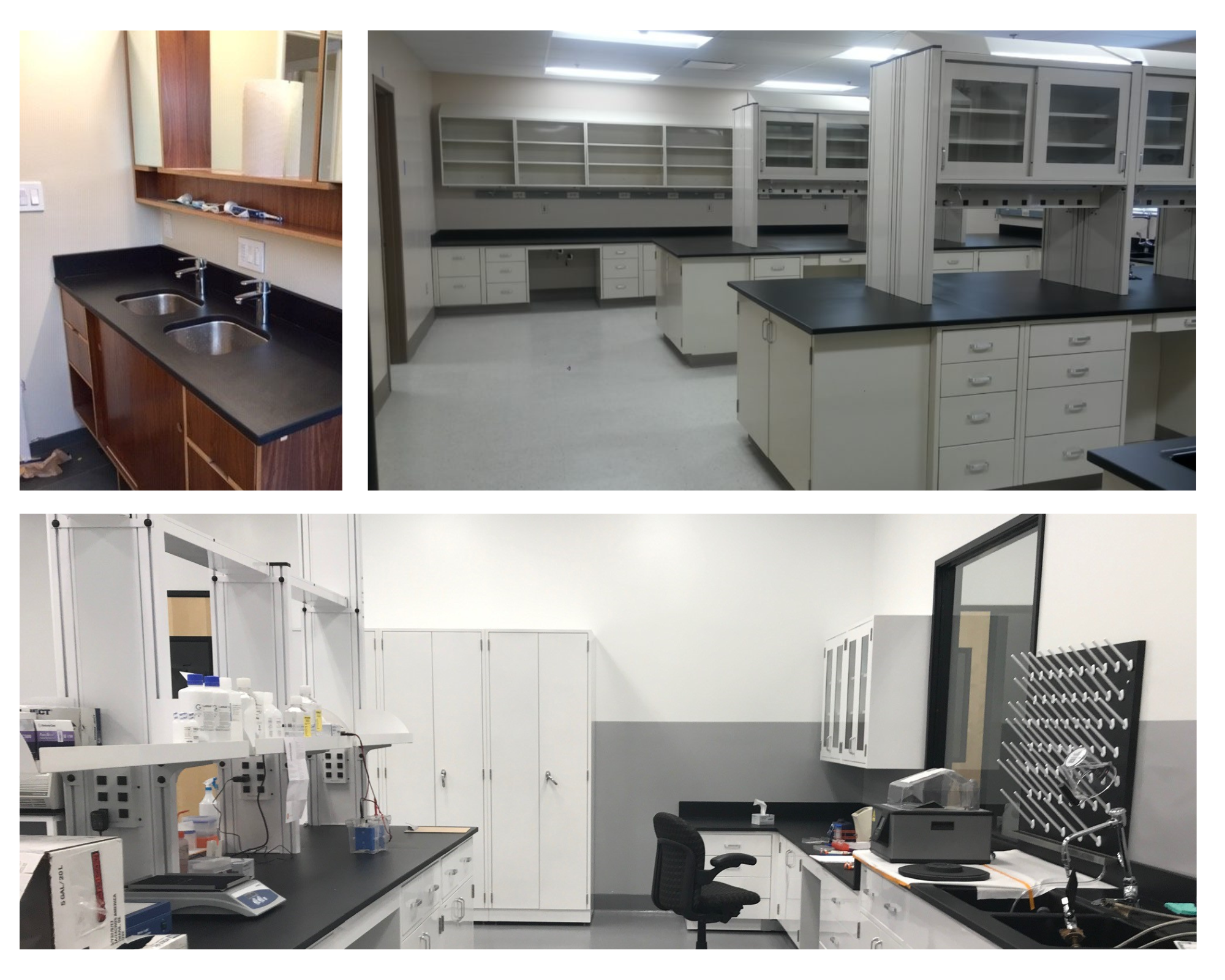When talking about pegboards, most people think of a hardware store with isles of tools. But pegboards do a lot more than just serve as mounting points for hooks and for tool display. Pegboards come in different types, and lend themselves to many uses. In fact, they’re the perfect addition to a lab!
Every lab needs to be organized, so you can easily locate your tools when you need them. Though using storage containers is an option, they’re hardly customizable. Before going out to shop for epoxy resin pegboards, read further to learn about how large plastic pegboards can be used inside your lab.
Different Types of Pegboard
There are three main categories of pegboards: light duty, heavy-duty, and specialty.
Light duty pegboards are 1/4 inch thick hardboard. They are not the most sturdy and are best used to support toys, light fixtures, and furniture.
Meanwhile, heavy-duty pegboards are made of galvanized metal sheets and are capable of supporting heavy equipment up to twice their weight. These are often found in hardware stores and factories.
Lastly, specialty pegboards are made from polypropylene or epoxy resin. Such materials make specialty pegboards water-resistant. Hence, they are the best option for frequently wet areas such as kitchens, bathrooms, and labs.
How to Mount Pegboard Walls
Pegboards are incredibly versatile additions to any work area. Luckily, pegboard installation is also easy to DIY.
1) Mark your wall
Before mounting a pegboard on your wall, first plan where you will put it. Measure your pegboard and mark your wall. If you’re attaching the pegboard to a concrete wall, use wall studs or command strips. If you’re attaching it to a dry wall, you can also use wall anchors.
2) Install furring strips
When mounting pegboards, install furring strips to put some space between the pegboard and the wall for connecting hangers.
To install furring strips, hold them horizontally across the wall and place one level on top. Screw the fur strips into the wall studs or wall anchors. This can be challenging to do on your own as the fur strips move around, so you can ask someone to hold the fur strips while you drill through them. If you’re using command strips, you may attach the furring strips yourself.
3) Screw the pegboard into the furring strips
Once the furring strips are installed, lift the pegboard over the wall. One side of the pegboard is likely painted, so hold that side outward and hold it over the wall, covering the furring strips. Once certain of the pegboard placement, screw through its holes and into the furring strips, and use washers for a more secure hold.
Align the screws in the furring strip, and position them roughly six inches apart to ensure more even weight distribution. To cover a larger area, you can purchase more pegboards and furring strips, and attach them as panels on the wall.
If you’re using command strips, installation only requires you to stick the pegboard to your wall. But do note that such will have weaker hold than those mounted onto the wall via screws.
Pegboard Specs
Most pegboards have holes within 1 inch distances from each other. But there are varying pegboard thicknesses available and the hole sizes differ. Small holes are 3/16 inches in diameter and are usually found on 1/8 inch thick hardboard, while large holes are 1/4 inches in diameter and are usually found on 1/4 inch thick hardboard.
The pegboard material also dictates the weight of the board and directly impacts how sturdy the pegboard is. Boards made of metal can carry more weight compared to hardwood or epoxy resin.
Different Uses for Large Plastic Pegboards Inside Your Lab
Labs house a good deal of equipment, tools, and glassware. Though shelves are great for storage, racks make materials readily available for you to reach for. Adding a pegboard to your work surface offers this privilege and at an incredibly low price.
Additionally, pegboards come in plastic. Compared to a hardwood or metal pegboard, they are better recommended for lab use, where they may have to be wiped down regularly or be exposed to moisture.
DIY Display Case
A lab may be a place for you to work, but it’s also where you can showcase your work for you and your visitors to appreciate. Mounting a plastic pegboard on your lab allows you to install a makeshift shelf or rack that puts your prototypes and samples on display.
Tools Organizer
No one thrives in a messy work environment. Work better in your lab attaching containers and organizers to your pegboard. This organizes your tools while also making them easily accessible for more efficient work.
Pegboard Planter
Every workplace deserves a bit of sprucing up to help cheer you up and do your best work. If you’re tired of your spic and span lab, an easy way to bring life to it is by adding greenery to your space with the help of a plastic pegboard! You can have plant pots hang from pegs and hooks, or place them over a panel that is screwed into your pegboard.
Drawer Divider
Plastic pegboards are not only for walls, you can also use them to organize drawers! If you have small tools, accessories, or glassware in your lab, you can help keep them safe and organized by putting plastic pegboards in your drawers.
Using two pegboards or more, one can create dividers and customize them with panels to fit specific items you store in your drawer!
Cupboard Transformation
If you already have a cupboard, adding a plastic pegboard allows you to better utilize the large space inside it. This is particularly useful in preventing your equipment, materials, or supplies from mixing together or shaking.
Install a pegboard to build a rack inside your cupboard for more storage space or install brackets to hold hardware or equipment.
Quality Pegboards For Your Lab
There are numerous uses for pegboards in and out of the lab. Whether you need one in hardwood, metal or epoxy resin, shop for your supplies and other installation materials at ResinTops.
ResinTops is the number one source for premium quality epoxy pegboards, as well as countertops and other phenolic resin products. Visit us today to shop for epoxy resin pegboards at affordable prices!
Frequently Asked Questions
Can large plastic pegboards support heavy equipment or tools?
It depends on the quality and design of the plastic pegboard. Generally, plastic pegboards are not as strong as their metal or wooden counterparts, and may not be suitable for extremely heavy tools or equipment. For optimal usage, you must determine your pegboard’s intended purpose so you can maximize its benefits.
Are there any specific recommendations for cleaning and maintaining plastic pegboards in a lab setting?
Plastic pegboards can be cleaned with mild soap and warm water. Avoid using abrasive cleaners or brushes, as these can scratch the plastic surface. For maintenance, make sure not to overload the pegboard and regularly check for any signs of wear or damage. Also, ensure that the pegs and other attachments are firmly secured.
Can plastic pegboards withstand exposure to chemicals commonly used in laboratories?
Many types of plastic are resistant to a wide range of chemicals, but the degree of resistance can vary depending on the specific type of plastic and chemical involved. Therefore, it is always a good idea to check the specifications provided by the manufacturer. Some chemicals may cause discoloration, brittleness, or other types of damage.
Can plastic pegboards be used in areas with high humidity or moisture?
Yes, plastic pegboards can generally be used in areas with high humidity or moisture without suffering damage, as they are resistant to rust and rot. However, if they are used in a very damp environment, there might be a risk of mold or mildew, so regular cleaning is necessary.
Are there any safety considerations when using plastic pegboards in a lab?
While plastic pegboards are generally safe to use, they should be securely attached to the wall to prevent them from falling. Overloading the pegboard can also lead to it falling or the items stored on it falling off, which could cause injury. As mentioned earlier, they should also be kept clean and checked regularly for damage. For more info, check out our tips on installing pegboards.
Are there any additional accessories or attachments available for large plastic pegboards to enhance their usefulness in a lab environment?
Yes, there are many additional accessories that can be used with plastic pegboards to increase their usefulness. These include different types of hooks, bins, and shelves that can be attached to the pegboard to hold tools, equipment, and supplies. Some pegboards might also have specialized attachments designed for specific types of tools or equipment.


